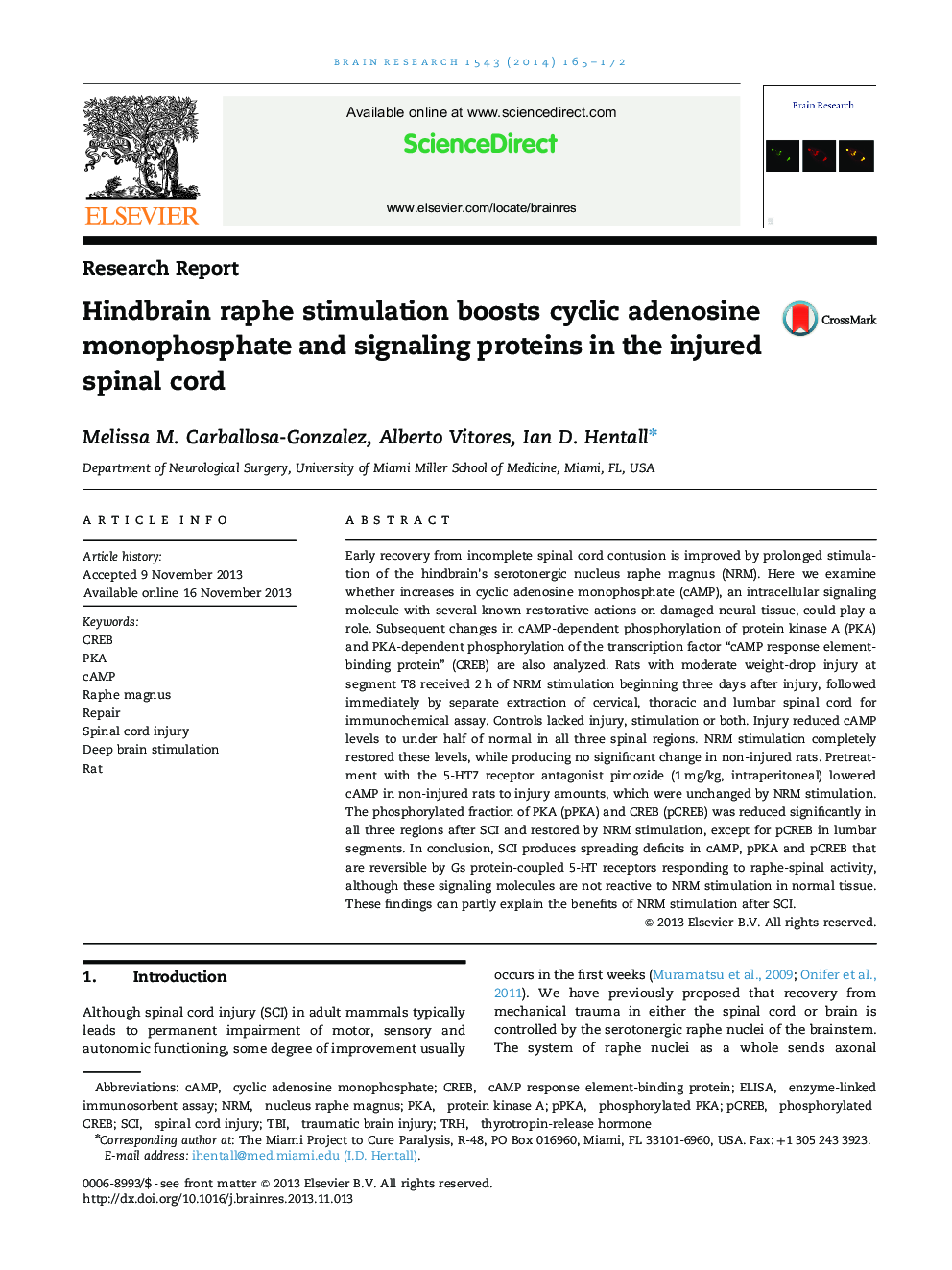| کد مقاله | کد نشریه | سال انتشار | مقاله انگلیسی | نسخه تمام متن |
|---|---|---|---|---|
| 6263447 | 1613896 | 2014 | 8 صفحه PDF | دانلود رایگان |
- After thoracic injury, the signaling molecule cAMP falls throughout the spinal cord.
- cAMP also falls when serotonin 5-HT7 receptors are blocked by the drug pimozide.
- Stimulation of a serotonergic hindbrain raphe region restores cAMP after injury.
- Activation of signaling proteins PKA and CREB largely mirrors the changes in cAMP.
- The raphe may improve repair from spinal damage partly via these molecular changes.
Early recovery from incomplete spinal cord contusion is improved by prolonged stimulation of the hindbrain's serotonergic nucleus raphe magnus (NRM). Here we examine whether increases in cyclic adenosine monophosphate (cAMP), an intracellular signaling molecule with several known restorative actions on damaged neural tissue, could play a role. Subsequent changes in cAMP-dependent phosphorylation of protein kinase A (PKA) and PKA-dependent phosphorylation of the transcription factor “cAMP response element-binding protein” (CREB) are also analyzed. Rats with moderate weight-drop injury at segment T8 received 2Â h of NRM stimulation beginning three days after injury, followed immediately by separate extraction of cervical, thoracic and lumbar spinal cord for immunochemical assay. Controls lacked injury, stimulation or both. Injury reduced cAMP levels to under half of normal in all three spinal regions. NRM stimulation completely restored these levels, while producing no significant change in non-injured rats. Pretreatment with the 5-HT7 receptor antagonist pimozide (1Â mg/kg, intraperitoneal) lowered cAMP in non-injured rats to injury amounts, which were unchanged by NRM stimulation. The phosphorylated fraction of PKA (pPKA) and CREB (pCREB) was reduced significantly in all three regions after SCI and restored by NRM stimulation, except for pCREB in lumbar segments. In conclusion, SCI produces spreading deficits in cAMP, pPKA and pCREB that are reversible by Gs protein-coupled 5-HT receptors responding to raphe-spinal activity, although these signaling molecules are not reactive to NRM stimulation in normal tissue. These findings can partly explain the benefits of NRM stimulation after SCI.
Journal: Brain Research - Volume 1543, 16 January 2014, Pages 165-172
